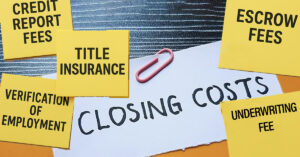Money can cause people to make emotional decisions, but numbers don’t lie. The ability to effectively manage cash is the first skill every small-business owner must master in order to successfully grow — even when the practice feels counterintuitive.
So, when it comes to the market for residential fix-and-flip properties, why are many investors doubling down on bad business practices? For the mortgage originators who work with these small-business owners, there is a simple solution to help them stay profitable and successful. By working with private lenders that can provide up to 100% of the rehabilitation costs on these projects, originators can earn repeat business from fix-and-flip investors for years to come.
To help these borrowers increase their return on investment (ROI), originators should understand how the home-flipping market works and why cash-flow issues are a common occurrence. You can then help these investors make smarter decisions by connecting them to the right kind of rehab financing.
Development investing
Prior to the outbreak of COVID-19, construction was booming in many parts of the country. Arizona, which had the nation’s third-highest population growth rate from 2018 to 2019 at 1.7%, was a prime example of this trend, and new-home construction is likely to rebound once the coronavirus threat is contained.
Despite buzz about a pending recession and threats of a trade war earlier this year, housing growth was strong and investors were quick to pour money into their local economies. Although many lenders fund new construction, fix-and-flip rehabilitation of existing homes is a more profitable venture for investors. These rehab loans also fall under the category of development.
A lender’s generally accepted accounting practices traditionally limit funding for rehab loans to 70% or 80% of the total funds needed to complete a project. There are benefits to this model. It’s less risky for both the investor and lender — provided that everything with the project goes smoothly — and it creates a pretty picture of the investor. On paper, the investor is rich, blessed by high revenue and low debt. But if the investor is cash-poor, circumstances can go south quickly.
To make up for the shortfall created by these generally accepted accounting practices, the investor often must bring their own cash for the remaining 20% to 30% of project costs. Keep in mind, this is money the investor must produce on top of the funds already allocated to acquiring the property, which could be another 20% percent of the upfront purchase price. So, what’s to be done when the spring runs dry?
Cash crunch
In any business, cash-flow issues aren’t a matter of if, they’re a matter of when. Business owners, especially the entrepreneurial types who typically do fix-and-flip projects, are often eager to dive into opportunities to earn a good return on investment. Sometimes, however, that eagerness leads to the less-than-desirable result of being spread too thin financially.
Financial shortages can occur with either project-related cash or the investor’s personal cash, but where the shortfall occurs isn’t the most critical thing. There are many causes for cash shortages. Sometimes the project has cost overruns. Sometimes a contractor ends up taking more time than anticipated. A problem once considered small could turn out to be a big one. There might be a design shift toward higher-end finishes and fixtures. In hotter real estate markets, cost or payment timelines might be shortened due to competition with other home flippers. Of course, there’s always the potential for an investor to experience a personal emergency.
So, where can an investor turn when the crunch hits? Depending on the severity of the financial shortfall, they could have family members or friends with pockets deep enough to help. This option can be appealing in a pinch, since it can be accompanied by low-interest or even no-interest payments. Sometimes these sources are easier to approach because they don’t require documentation that the loan will be repaid quickly or in full, and there’s the added intimacy of a personal relationship.
This coin has another side, however. First, there’s the emotional cost of the request, especially if an investor is approaching members of their immediate family. The emergency funding can be unreliable or take too much time to acquire, or the amount available may be insufficient. Worst of all, the investor may end up with too many relationships and payments to juggle, and can wind up burning some bridges.
What about credit cards? Being able to accommodate unexpected costs by using a credit card can be convenient and these products often include a rewards system. Charging expenses and regularly paying off the balance increases the investor’s credit score, making them more attractive for future loan requests, but rapidly accumulating several large balances can end up harming their rating.
An obvious drawback here is that credit-card interest rates are often much higher than those offered by conventional rehab lenders. If the project timeline is too long, cost overruns and compounding interest can kill the bottom line. If the funding shortfall is significant, investors might have to juggle multiple lines of credit, resulting in higher costs of borrowing. And lenders will perceive these borrowers as a greater risk when it comes to future projects.
Focus on numbers
A better way has to exist — and it does. The most viable solution is to work with a private lender that offers 100% financing of the rehab costs.
This one-stop solution allows investors to pay contractors on time, which keeps these critical relationships healthy. A happy contractor will prioritize the projects of their best clients, is more likely to meet deadlines and is less likely to be too busy to take on future projects. Full funding of fix-and-flip projects also allows for improved quality on items such as finishes and fixtures, leading to the best possible end result rather than a compromised or incomplete look.
It’s important to be aware that investors need to have enough liquidity to draw on available funds. With these funds, however, investors can use the same cash repeatedly rather than waiting for the completion of a project in order to be reimbursed. The best way to take the emotion out of a funding crisis — and keep the crisis from financially impacting the business — is to focus on the numbers.
All businesses want a good return on investment and home flippers are no exception. When the investment is limited to the cost of acquisition — a down-payment plus monthly payments during the rehab phase — the ROI skyrockets. There simply is no need to put additional personal funds into play when all they do is serve to reduce the return. Mortgage originators can help these borrowers keep their liquid assets as a safety net for personal or business-related emergencies, and these clients will work smarter by letting lenders do the heavy monetary lifting.
Author
-

Tyler Stone is the founder and president of Capstone Financial, which specializes in privately funded loans for commercial and fix-and-flip investment properties. A national direct lender launched in 2010, Capstone has simplified underwriting processes for first-lien position investment and bridge financing. Programs range from streamlined fix-and-flip rehab loans to one-off funding for “makes-sense” deals.
View all posts






